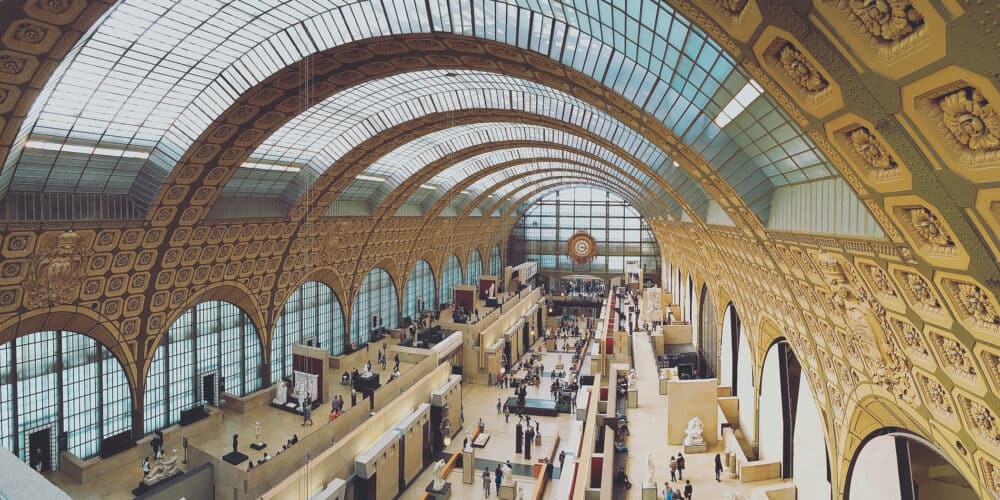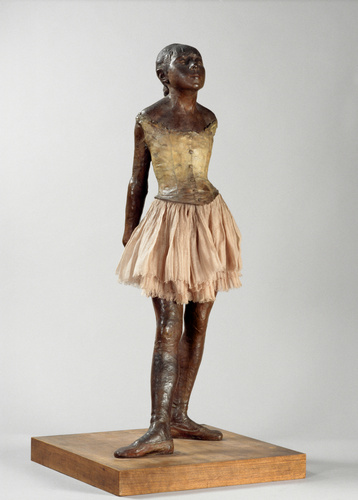Musée d'Orsay
Paris, France

Explore Musée d'Orsay in Paris, France—a top destination for art lovers and one of the most iconic historical sites in France. This former train station turned museum showcases world-famous Impressionist and Post-Impressionist artworks, stunning Beaux-Arts architecture, and fascinating history. Ideal for travelers looking for cultural experiences and things to see in Paris, Musée d'Orsay tourism offers unforgettable insights into France’s artistic legacy.
If you're planning to visit Musée d'Orsay in Paris, France, you're in for an unforgettable journey through time, art, and architecture. As one of the most celebrated historical sites in France, the Musée d'Orsay attracts millions of visitors each year, making it a must-see destination when exploring the top things to see in Paris. A Rich History on the Banks of the Seine Originally built as a railway station, the Gare d'Orsay, the building that houses the museum was completed in 1900 for the Exposition Universelle (World’s Fair). Designed by architect Victor Laloux, it was once hailed as the most modern railway station of its time, catering to electric trains. However, by the mid-20th century, the station became obsolete, and the grand structure faced the threat of demolition. Thankfully, it was saved and repurposed as a museum. The Musée d'Orsay officially opened its doors in 1986, showcasing French art from 1848 to 1914. Today, it's not only a major stop for art lovers but also a vital cultural landmark in Paris and a shining example of adaptive architectural reuse. Top Features and Highlights One of the biggest draws of Musée d'Orsay tourism is its incredible collection of 19th and early 20th-century art. Visitors can marvel at world-renowned works by masters such as Monet, Manet, Renoir, Degas, Van Gogh, Cézanne, and Gauguin. From iconic Impressionist and Post-Impressionist paintings to stunning sculptures, decorative arts, and photography, the museum offers a comprehensive overview of this revolutionary era in art history. The museum’s architecture is just as impressive as its collections. The Beaux-Arts style building retains the grandeur of its former life as a train station, with a soaring iron and glass roof, a majestic central hall, and the iconic giant clock that offers a dreamy view over the Seine River and Montmartre in the distance. What Makes It Unique – Fascinating Facts and Features What makes the Musée d'Orsay stand out among historical sites in France is its unique transformation from a train station to a world-class museum. One fascinating detail is that the museum’s massive central nave once hosted platforms and train tracks, now replaced by elegant galleries and walkways. The giant ornamental clocks are not just decorative—they’re fully functional and offer some of the most Instagrammable views in Paris. Another lesser-known gem: underneath the grand structure lies a model of the Paris Opera House and a preserved segment of the original station machinery, offering a peek into the building’s past life. Visiting Today – Tips and Essential Information Today, the Musée d'Orsay is a thriving art hub, drawing locals and tourists alike. Open from Tuesday to Sunday (9:30 AM to 6:00 PM, with late openings on Thursdays until 9:45 PM), the museum is closed on Mondays and major holidays. Ticket prices are approximately €16 for adults, and free for visitors under 18 or EU residents under 26. To avoid long lines, it's highly recommended to book tickets in advance online. The museum is wheelchair-accessible and offers amenities such as audio guides, cloakrooms, cafes, and gift shops. For the best experience, plan your visit on weekday mornings or late afternoons to avoid peak crowds. Photography is allowed without flash in most areas, and respectful visitor etiquette is encouraged to preserve the atmosphere for everyone. A Paris Must-See for Culture Lovers Whether you're passionate about art, history, or architecture, a visit to Musée d'Orsay in Paris promises a deeply enriching experience. From its fascinating origin story to its status as one of the top art museums in the world, it's easy to see why the Musée d'Orsay is among the top things to see in Paris and a beloved part of French cultural heritage.
Location
Coordinates: 2.3266, 48.8599
View on Google Maps



